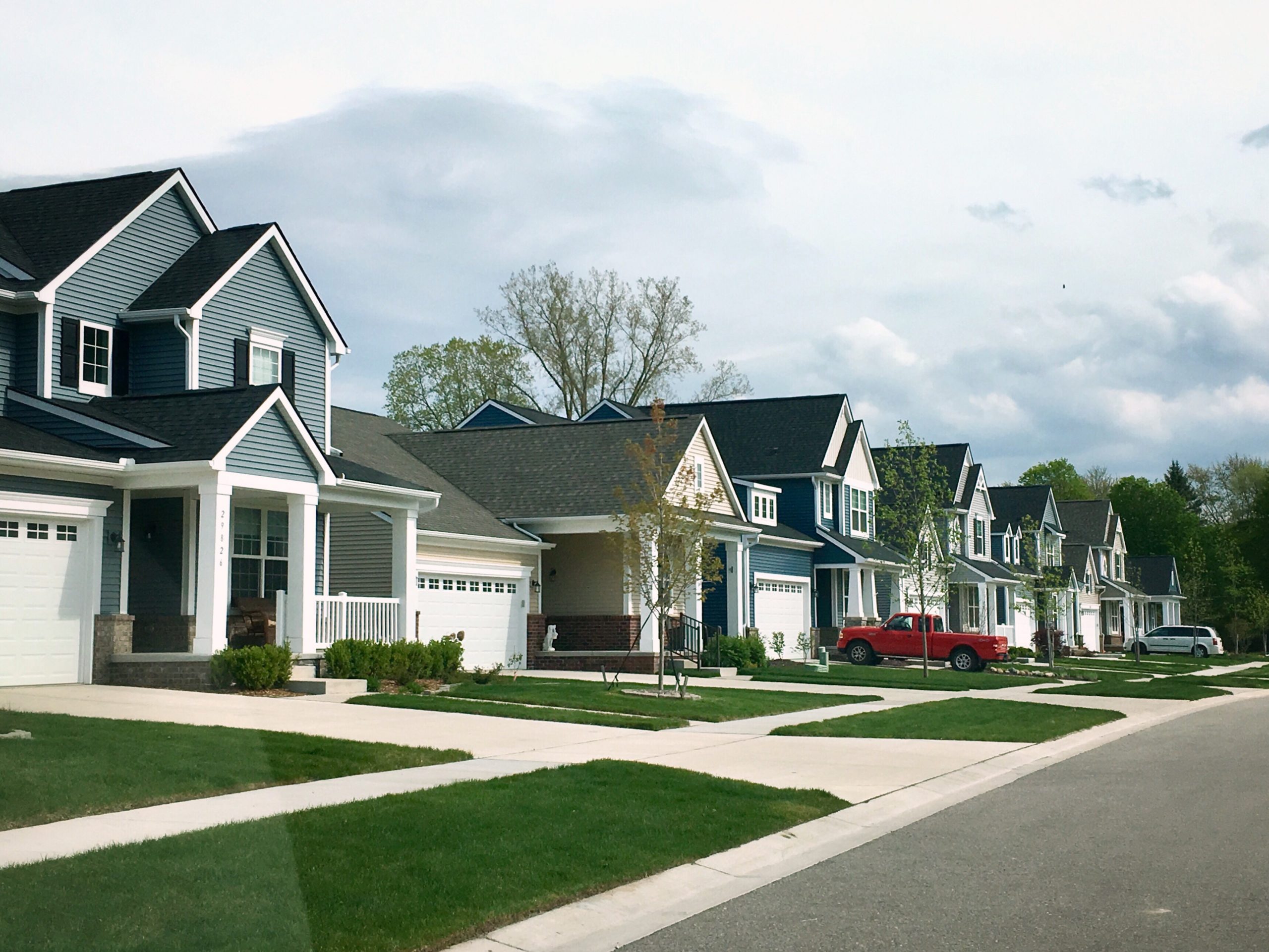
Moving from one city to another can be a huge process, especially if you are moving to a completely different state (or country!). Finding the right neighborhood, choosing the best school districts, meeting new friends—all of these factors impact your Kansas City experience. Plus, we can’t forget how moving is often a financial endeavor that requires a lot of planning.
As local Kansas City bankers, our team at Cornerstone Bank is all too familiar with the joys and challenges of life in the city. Whenever you’re ready to move, we want to help you make the process smooth and seamless. To get you started, we’ve created a Kansas City relocation guide you can take with you wherever you go!
Finances, Budgeting, & Cost of Living

Before you can get into the fun stuff, you want to make sure you have all your money in order. The last thing you want is to be ill-prepared for the expenses and surprises that come with big moves. It’s one thing to move from neighborhood to neighborhood within a city, but if you’re moving hundreds of miles away, you don’t want to leave room for too many mistakes.
Tip #1: Research the cost of living
While Kansas City isn’t the biggest metropolitan area in the country, it definitely isn’t small. That means there are a variety of neighborhoods (we’ll discuss these later) that all come with their own cost-of-living range. Living in a Johnson County suburb may cost you more than living in a Jackson county or Wyandotte county suburb. Various cities also have their own taxes and laws that affect daily living costs.
With that being said, we can definitely give you a more general number on what to expect for the cost of living in Kansas City. Cost of living is often measured based on the U.S. average of 100. Any number lower than 100 means the cost of living is cheaper than the average city; any number above means it’s more expensive. According to the Missouri Economic Research and Information Center, for Q3 of 2020, Kansas City’s cost of living sat at 95.4 (this also includes the Kansas side), making KC a pretty affordable place to live compared to other places!
Let’s break that down based on their numbers:
Housing: 84.3
Utilities: 98.8
Health: 104.4
Grocery: 98.9
Transportation: 93.5
Tip #2: Make a list and plan ahead
Planning, planning, planning—it might not sound like the most fun thing in the world, but it sure will help ease stress in the long run. Before you pack up the U-Haul and head out, triple check you have everything in order. Try to plan as early as possible so you can mark all your Xs well before you have to leave.
Things you want to consider for moving costs:
- Moving truck/mover costs
- How many items you want to take vs. items you can sell
- Whether or not you still have a house to sell
- Cost of travel (i.e. plane tickets, gas, etc.)
- Transporting your vehicles if flying
- Relocation packages from future employer
- Future income vs. cost of living
- Miscellaneous surprises that could arise
Tip #3: Create a budget and stick to it
Once you have outlined expected costs and calculated their numbers, it’s time to build your budget. If you know you’re going to be moving soon, then you may want to be more frugal than usual. It might be difficult to live a financially stricter lifestyle for the time being, but we promise it’s worth it. When it comes time to move, you’ll have an extra cushion to sit on so you won’t have to stress or pull out unnecessary quick loans.
Ways to save money before a big move:
- Cut back on eating out
- Try out free activities with the family
- Eliminate unnecessary spending (i.e. buying the extra candle holder you don’t need)
- Ask for family and friends to help with the move instead of hiring movers
- Sell unwanted items and add profits to a savings account
Learn more about saving money before moving out of state. →
Tip #4: Switch to a local Kansas City bank
Your finances are a big deal, and you don’t just want to choose any bank in Kansas City you can find. Even your go-to national bank won’t be able to guide you through local city life. The perks of choosing a local bank help you learn more about Kansas City and all it has to offer. Plus, local bankers can help you make better financial decisions based on the local economy they’ve experienced firsthand.
Local banks are often smaller, too. Meaning, you get the one-on-one care you need during your moving process. There’s nothing quite as frustrating as traveling across the country while having to navigate through automated prompts from your bank. With a local bank like Cornerstone, you talk to a real banker every time. So not only do you get the added benefits of personalized care, you still can take advantage of things like online and mobile banking, ATM refunds, and more—basically anything you can do with a larger national bank.
How Banking Locally Can Lead to Greater Financial Success →
Kansas City Neighborhoods, Suburbs, & Cities

If there’s one thing you should learn from our Kansas City relocation guide, it’s that Kansas City isn’t just Kansas City; rather, it’s a vast and diverse metropolitan area that spans across two states. That means there are a variety of cities, towns, and neighborhoods in the area that are all quite different from one another. As a future KC resident, it can be hard to choose which neighborhood best suits you and your family. Now, we don’t have time to list every single place available, but we can break down a few to get you started!
Kansas City
Let’s start with the most obvious area. While many people say they live in Kansas City, they may come from surrounding areas. If you choose to live in Kansas City itself, you have a variety of options within an urban, city environment. Neighborhoods include:
Downtown: Living downtown is a great option for young, working adults who enjoy a big city feel with a great nightlife. It’s also convenient if your job happens to be downtown so you can avoid morning traffic. However, lofts and apartments in the area tend to be more expensive.
Westport: Westport offers an old-time feel mixed with the KC modern life. For those with kids, this may not be the best option since it can get a little hectic at night due to clubs and bars.
Plaza: The Plaza area can be a little more expensive, but it’s very close to high end shopping and great restaurants. Plus, if you’re moving to Kansas City as a UMKC student, this area is a go to since it’s close to campus.
Waldo: Many first time home buyers flock to Waldo for their nice, affordable homes within a city environment, though the area definitely feels slightly more suburban. This is also a great place to find quaint local eats while remaining close to main city attractions.
South KC: South Kansas City is closer to more suburban areas but remains only minutes away from the heart of the city. It’s also an affordable option for housing and apartments. South Kansas City is sometimes combined with southern Raytown (a small city great for affordable family housing).
Lee’s Summit
If you don’t know much about the KC area, you may not have heard about Lee’s Summit. Nestled on the Missouri side, Lee’s Summit is a booming suburban city filled with shopping centers, family activities, delicious restaurants, and a great school district. Over the past few decades, it has grown from a small town to a population of over 97,000 people! Now the city is building a lot more high-end apartments in the area so home buyers and renters alike can find a place to live.
Lee’s Summit has slightly higher taxes than some other Jackson County cities, so the cost of living could cost you a bit more.
Overland Park/Leawood
Though Overland Park and Leawood are two different cities, they are quite similar and close together. These areas are phenomenal places for families of all sizes, especially for those with children aged K-12. The Blue Valley School District is a top factor that pulls people into Leawood and Overland Park. This school district is not only one of the best in the Kansas City area, it’s also one of the top school districts in the country.
Both reside in Johnson County, Kansas, which on average, has higher tax rates than the Missouri side. Leawood specifically may cost a pretty penny to find a home—it’s ranked number 75 out of the top 200 richest cities in the United States. However, you will be close to high-end shopping at Town Center and Park Place, and there are also tons of activities everyone in the family can enjoy.
Note: For a more affordable Johnson County area, Olathe still boasts a good school district and nice neighborhoods.
Again, those are only a few city options you can choose from, and you’re definitely not limited to them. Other choices include:
- Grandview, MO
- Independence, MO
- Blue Springs, MO
- Liberty, MO
- North Kansas City, MO
- Kansas City, KS
- Shawnee, KS
- Gardner, KS
Up Next: Find the best activities to do in the KC area →
Learn more about our Kansas City Relocation Guide with Cornerstone Bank
More than anything, our bankers are here to help you with any of your financial needs. Since 2001, we have been a primary resource for our customers across the Kansas City metro and the country. We take pride in watching our customers thrive, no matter who you are.
We always put our customers first, and that means giving them the best banking has to offer. We don’t believe in simple banking; rather, we go above and beyond to help our customers make their money work for them.
For more information, visit our Overland Park office or call us at 913-239-8100 to let us know how we can help.


